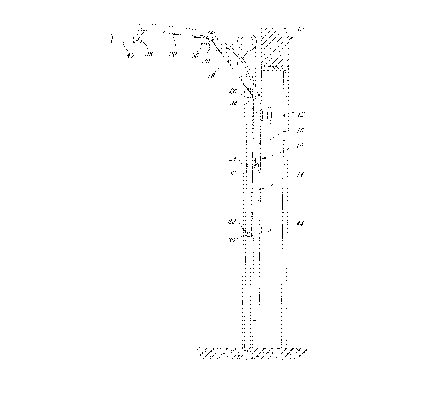Some of the information on this Web page has been provided by external sources. The Government of Canada is not responsible for the accuracy, reliability or currency of the information supplied by external sources. Users wishing to rely upon this information should consult directly with the source of the information. Content provided by external sources is not subject to official languages, privacy and accessibility requirements.
Any discrepancies in the text and image of the Claims and Abstract are due to differing posting times. Text of the Claims and Abstract are posted:
| (12) Patent Application: | (11) CA 2270614 |
|---|---|
| (54) English Title: | FINGER PROTECTING ARRANGEMENT IN A SECTIONAL ROLL-TYPE DOOR |
| (54) French Title: | DISPOSITIF DE PROTECTION DES DOIGTS POUR PORTE SECTIONNELLE |
| Status: | Deemed Abandoned and Beyond the Period of Reinstatement - Pending Response to Notice of Disregarded Communication |
| (51) International Patent Classification (IPC): |
|
|---|---|
| (72) Inventors : |
|
| (73) Owners : |
|
| (71) Applicants : |
|
| (74) Agent: | LAVERY, DE BILLY, LLP |
| (74) Associate agent: | |
| (45) Issued: | |
| (22) Filed Date: | 1999-05-03 |
| (41) Open to Public Inspection: | 2000-11-03 |
| Availability of licence: | N/A |
| Dedicated to the Public: | N/A |
| (25) Language of filing: | English |
| Patent Cooperation Treaty (PCT): | No |
|---|
| (30) Application Priority Data: | None |
|---|
In a rolled-type door, such as a sectional garage door, wherein
a plurality of horizontal vertically adjacent are hingedly connected together
at their adjacent inside edges, a series of finger protecting joint members
are
disposed longitudinally between the adjacent panels. Each end face of an
adjacent panel is formed of a front and rear section defining a gap
therebetween in which is lodged a longitudinal sealing member. The end
faces of adjacent panels include complementary convex and concave sides
which, when the panels are angularly hinged relative to one another,
eliminates the presence of a gap usually present in conventional doors
thereby preventing accidental wedging of the fingers of the door operator.
Note: Claims are shown in the official language in which they were submitted.
Note: Descriptions are shown in the official language in which they were submitted.

2024-08-01:As part of the Next Generation Patents (NGP) transition, the Canadian Patents Database (CPD) now contains a more detailed Event History, which replicates the Event Log of our new back-office solution.
Please note that "Inactive:" events refers to events no longer in use in our new back-office solution.
For a clearer understanding of the status of the application/patent presented on this page, the site Disclaimer , as well as the definitions for Patent , Event History , Maintenance Fee and Payment History should be consulted.
| Description | Date |
|---|---|
| Application Not Reinstated by Deadline | 2005-05-03 |
| Inactive: Dead - RFE never made | 2005-05-03 |
| Deemed Abandoned - Failure to Respond to Maintenance Fee Notice | 2005-05-03 |
| Inactive: Abandon-RFE+Late fee unpaid-Correspondence sent | 2004-05-03 |
| Application Published (Open to Public Inspection) | 2000-11-03 |
| Inactive: Cover page published | 2000-11-02 |
| Inactive: IPC assigned | 1999-06-22 |
| Inactive: IPC assigned | 1999-06-22 |
| Inactive: First IPC assigned | 1999-06-22 |
| Filing Requirements Determined Compliant | 1999-06-03 |
| Inactive: Filing certificate - No RFE (English) | 1999-06-03 |
| Application Received - Regular National | 1999-06-02 |
| Abandonment Date | Reason | Reinstatement Date |
|---|---|---|
| 2005-05-03 |
The last payment was received on 2004-03-18
Note : If the full payment has not been received on or before the date indicated, a further fee may be required which may be one of the following
Please refer to the CIPO Patent Fees web page to see all current fee amounts.
| Fee Type | Anniversary Year | Due Date | Paid Date |
|---|---|---|---|
| Application fee - standard | 1999-05-03 | ||
| MF (application, 2nd anniv.) - standard | 02 | 2001-05-03 | 2001-04-20 |
| MF (application, 3rd anniv.) - standard | 03 | 2002-05-03 | 2002-04-22 |
| MF (application, 4th anniv.) - standard | 04 | 2003-05-05 | 2003-04-28 |
| MF (application, 5th anniv.) - standard | 05 | 2004-05-03 | 2004-03-18 |
Note: Records showing the ownership history in alphabetical order.
| Current Owners on Record |
|---|
| PIERRE JUNEAU |
| Past Owners on Record |
|---|
| None |